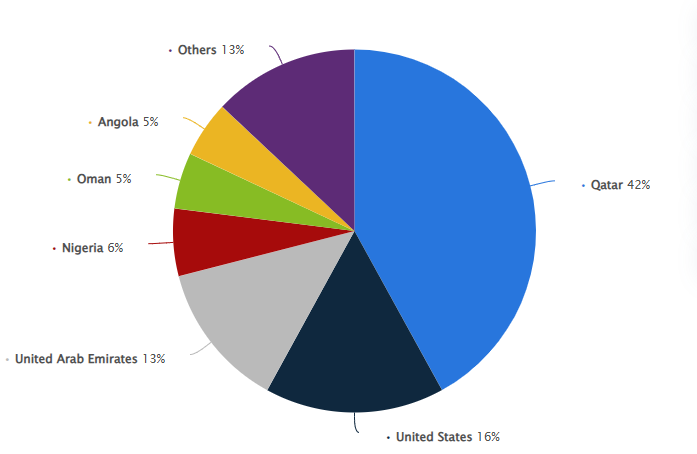

Bhubaneswar: In the 8th meeting between PM Modi and US President Donald Trump, and the first in Trump’s second term, India expressed its commitment to increase energy trade with USA by establishing the United States as a leading supplier of crude oil and petroleum products and liquified natural gas to India.
At present, as per Parliamentary Standing Committee report, USA has been the 6th crude oil exporter to India, and accounts for nearly 5.7% of India’s crude oil imports to the country annually. The share table is given below.
COUNTRIES | SHARE |
IRAQ | 26.2% |
SAUDI ARABIA | 19.48% |
UAE | 11.94% |
NIGERIA | 11.84% |
KUWAIT | 8.58% |
USA | 5.77% |
A glance at the above table shows India procures massively its crude requirements from the Middle East.
The total share of Middle East crude in Indian imports stands at 67 to 70%.
DIFFERENCE BETWEEN US CRUDE OIL AND MIDDLE EAST
The USA crude oil benchmark is known as WTI (West Texas Intermediate); whereas the crude produced by Middle East, Europe and Africa is known as Brent crude.
The difference between WTI and Brent crude is:
While the former is a light, sweet crude oil that is produced in the United States, primarily in Texas, Oklahoma, and North Dakota, Brent is a light, sweet crude oil that is produced in the North Sea, primarily in the United Kingdom, Norway, and Denmark.
The crude produced in Dubai is similar to Brent crude benchmark.
WTI is a lighter and sweeter crude oil, meaning it has a lower density and lower sulfur content than Brent. This makes it easier and cheaper to refine into gasoline and other petroleum products.
WHY INDIA RELIES MORE ON MIDDLE EAST?
The Ministry of Petroleum and Natural gas has the following reason.
“The main reason for that is, most of India’s refineries are designed for Middle Eastern crudes, plus the proximity from the Middle East to India which gives a lot of freight advantage. That is the reason why, whenever India do the exercise of crude oil procurement and do the optimisation run, the numbers are mainly picked up from the Middle East.”
PARLIAMENTARY STANDING COMMITTEE FAVOUR DIVERSIFIACTION
India is, currently, 3rd largest consumer of Oil, 3rd largest LPG consumer, 3rd largest LNG consumer and 4th largest refiner of the world, as per the Standing Committee report.
As per the Parliamentary Standing Committee report, over 60 per cent of the imports of crude oil of Oil PSUs come from countries situated in Persian Gulf region mainly from Iraq, Saudi Arabia, Kuwait and UAE. Further, about 85 – 90 per cent of LPG imports are sourced from Middle East countries situated around Persian Gulf.
Advocating the need of crude procurement diversification, the Committee stated:
“As majority of India’s hydrocarbon imports are being sourced from the Middle East region wherein due to geo-political flashpoints, the supplies can face disruption leading to unforeseen escalation of crude oil prices in India, its people and economy.”
“The Standing Committee view that over dependence of the country and Oil PSUs on any one region for crude oil and gas supplies can impact energy security of the country which entails getting uninterrupted supplies of crude oil and gas at reasonable prices to support the rapidly growing economy of the country.”
The Committee, therefore, recommended the Ministry of Petroleum and Natural Gas to take more concrete steps for the diversification of imports of crude oil and gas of the country by exploring new partners.
BUYING MORE US OIL: MODI GOVT’S DIVERSIFICATION PLAN
As per International Energy Agency’s World Energy Outlook, the energy demand of the country is expected to grow at about 3 per cent per annum till 2040, compared to the global growth rate of 1 per cent.
Given India’s increasing reliance on imported energy, the Union Government has a stated policy of diversifying the sources of crude oil and gas imports of the country and it has also taken steps to achieve the same.
In Modi govt’s recent years, the share of Middle East countries in the supply of crude oil to India had declined from 72 per cent in FY 2017-18 to 63 per cent in FY 2020-21.
Also, the share of Middle East countries declined marginally from 54 per cent in 2017-18 to 52 per cent in 2020-21.
NATURAL GAS: A GAMECHANGER IN US - INDIA TRADE
At present, USA is the 2nd largest exporter of natural gas to India. The country's share stands at around 16% vis-a-vis Qatar's 42%.\

But as per reports, US natural gas prices is comparatively cheaper. (view the image below)

THE BENEFITS
LIMITATIONS
As stated to Standing Committee, since Indian refineries are most suited to Middle east crude variety, this will limit US crude import to India in a big way. But theere seems no such bar in case of natural gas.
As per US report, estimated shale gas reserves in India stood at 63 trillion cubic feet (tcf); whereas the U.S. shale gas reserves, one source of natural gas, are an estimated 482 tcf.
In the given context, the Indo-US report has clearly stated that 5 tcf of natural gas could provide energy needs of 5 million Indian households for 15 years.